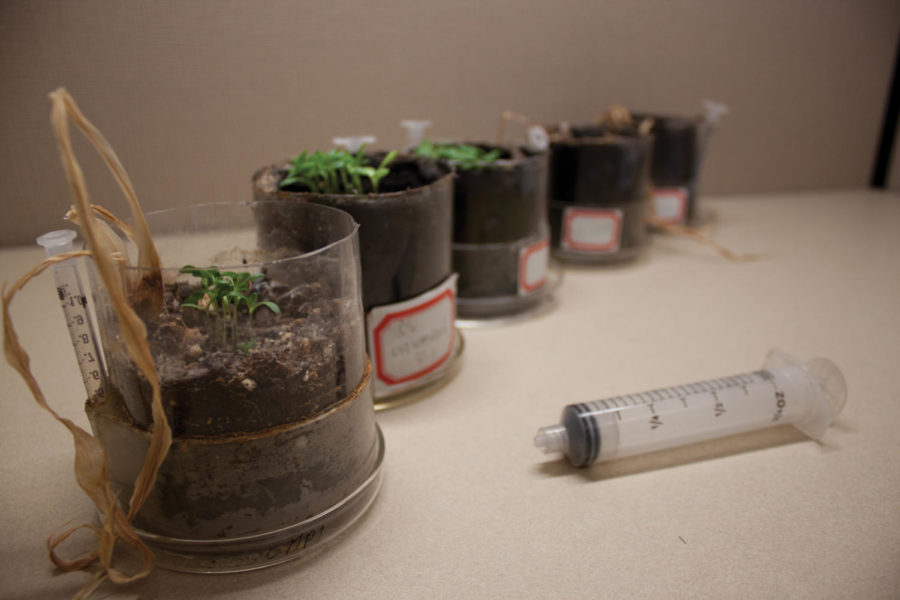Biochar is an investment in soil
September 18, 2012
While no meteorologist or agronomist can accurately predict which years will be “dry years,” scientists and farmers can now take steps to protect themselves against plant dehydration during a drought. Biochar, a substance known for its ability to retain water and enrich soil fertility, is on the mind of researchers at Iowa State.
Created from a process called pyrolysis, biochar exhibits many unique properties that could provide aid to combat future dry spells, the most noteworthy being water retention. In a lab study conducted at Iowa State, researchers discovered biochar increased the soil’s water retention by 15 percent.
“This year, [water retention is] huge because of the drought,” said David Laird, professor of agronomy. “If you can improve the soil quality and make it so the soil holds water better, then it will be more robust in a dry year.”
This revolutionary remedy is biochar, named for its similarity to charcoal.
“The word ‘charcoal’ is generally used when talking about a fuel, something you can burn,” Laird said. “’Biochar’ is a name we give it when we put it into the soil.”
Laird explained that a feedstock or raw material, such as corn stover, is heated to extreme temperatures where it breaks down into bio-oil and noncondensable gases with biochar as a byproduct.
Bernardo del Campo, graduate research assistant in mechanical engineering who is studying biochar, said specific types of biochar fit well with specific soils. The type of feedstock, process conditions and peak temperatures the material is exposed to during pyrolysis influences the biochar’s properties and qualities.
Corn stover produces a very fine, almost dust-like biochar, while red oak produces a biochar that is bulkier, jagged and takes up more surface area. Biochar is also similar to fertilizer — too much or the wrong type of char for the wrong soil will kill the plants.
“It’s going to be more like a soil amendment,” del Campo said. “That amendment should balance or complement some properties of the soil. The best biochar will match with your soil.”
In agricultural plots where the soil is less than optimal, biochar can also help restore fertility and crop yields.
“We do see a benefit from biochar on poor quality soils, degraded soils and sandy soils that have low water holding capacities,” Laird said. “It’s not so much that it can raise the yields on the best soils, so much as it can increase the yields on the worst soils.”
Biochar makes the soil better which improves agricultural productivity. Laird said it helps the soil retain nutrients otherwise lost through leaching because the char acts as a filtering material.
“It retains the nutrients in the soil where they can be used by the next crop instead of leaching down into the river,” Laird said. “It’s not new; what is new is the realization that biochar could be used as a co-product of bioenergy production so that we could simultaneously be producing renewable energy and a char that could be returned to the soil that could build soil quality.”







